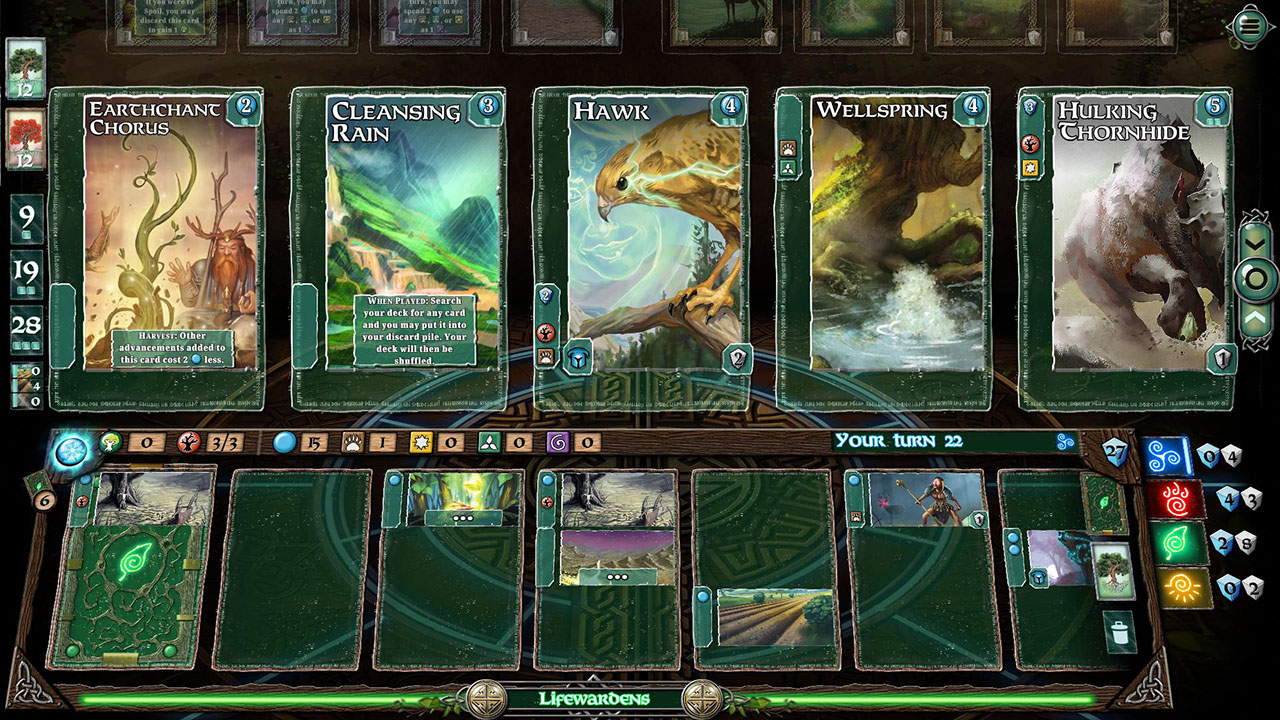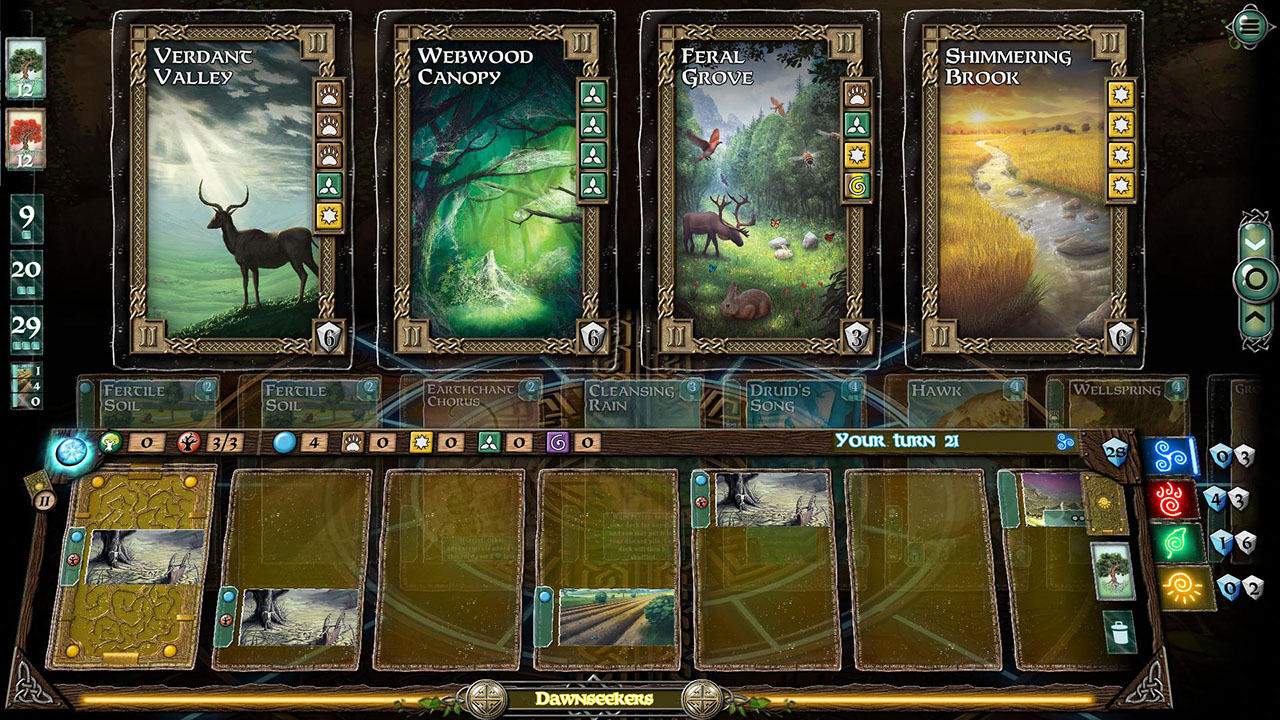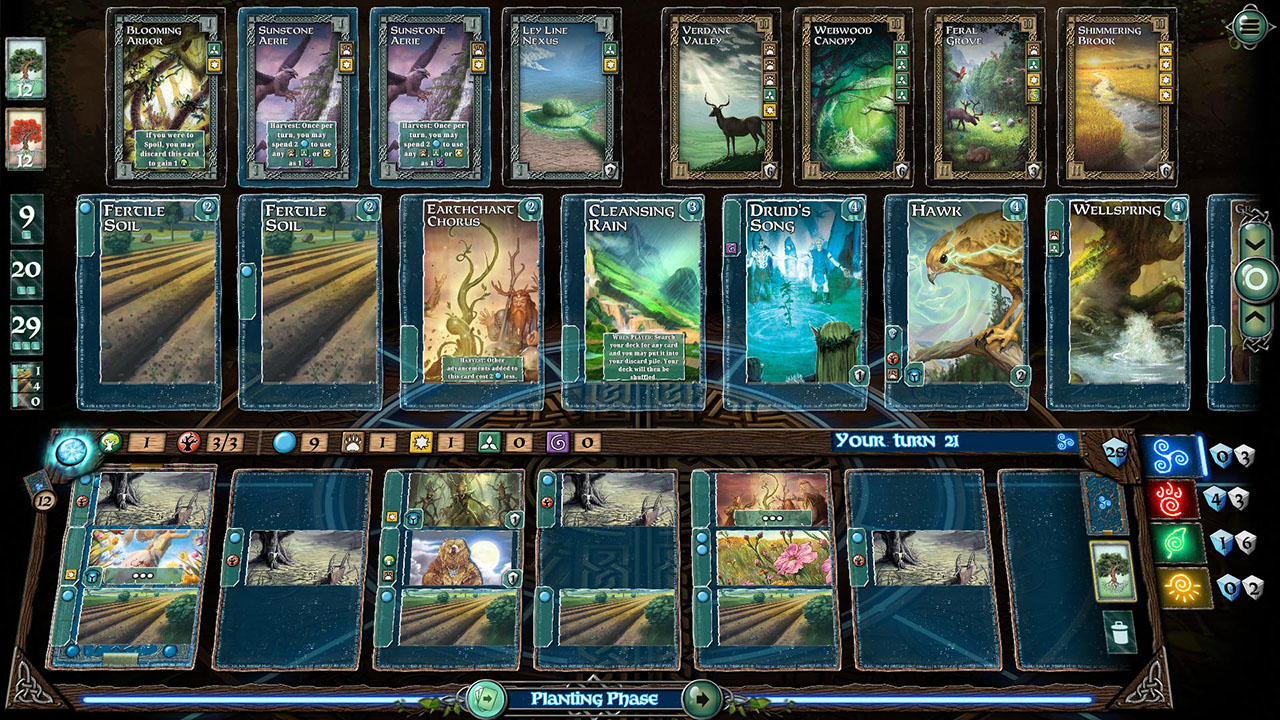When I reviewed Mystic Vale a few years ago, I remember thinking how novel it was to play not only a deck-building game, but a game in which the players actually construct cards by slipping new “powers” into existing card sleeves. In practice this was tactile but a little fiddly (especially when resetting). The digital version of Mystic Vale removes the issue of having to reset cards, but does it also remove the fun of the card-crafting party trick?
Well, no not really. What made Mystic Vale interesting in the first place was not just the actual physical crafting of the cards (achieved by slipping plastic “cards” made up of three panels into a slightly larger clear sleeve) but also the benefits you get from doing so. For example, some of the insertable cards feature powerful benefits for other symbols or aspects that are placed within the same sleeve.

Each player begins the game with a deck that contains a specific number of cards of three varieties. Some of these have verdant fields (which generate mana), whilst others have spoiled land (which has spoil symbols) and then several more are simply blank. Each card has three panels as I mentioned earlier, and those panels are basically at the top, middle and bottom of the card.
As the game goes on, the active player will draw cards from their deck until either they decide to stop or until they draw three spoilage symbols (in which case they spoil, which is effectively busting and losing a turn). The slight nuance to this is that the top card of the active players deck is face up — and spoilage symbols count here, whilst any other symbols or effects do not. When three spoil symbols are shown, you could choose to draw the card and take the risk that the next face up card will spoil you, or you can just wait there.

When you do decide to stop flipping cards and move to the harvest phase, you’ll assess all of the mana and other symbols on your cards excluding the face up one on top of your deck. You will then assess the market and decide if you want to buy one or more cards — these include “regular” cards which simply slot into one of the sleeves you’ve just played (ideally filling in an empty panel to make the card more powerful) as well as Vale cards, which are more powerful, permanent cards that sit in front of you for the rest of the game.
Most Vale cards require several symbols that can only be found either on other Vale cards, or on cards that you took on previous turns and added to your cards. Because of this somewhat cyclical approach to building cards, then adding Vales and then building more cards, Mystic Vale has a fantastic pace that really picks up as the game goes on. Some cards generate victory point tokens each time they are played, or when set conditions are met, and this is important because the game is setup with a specific number of tokens available — and when they are all gone, the winner is the one with the majority of them.

Honestly, all of this works beautifully on Nintendo Switch, with the presentation (which is kind of classic fantasy whimsy) being nothing new, but nonetheless very functional and super slick. Button presses and/or swipes on the screen achieve exactly what you would expect them to, and the only issue I had with the interface was in the use of a particular token which flips whenever you spoil, but can be used later as extra mana.
Players can choose from a solo mode against up to three AI opponents with three difficulty levels (easy and normal both being too easy, hard being fine) and then there is a multiplayer mode which works similarly — with up to four players supported if you can find them. And that, unfortunately, is it. There is no campaign mode strung together by a few lines of text, there are no challenges — there’s just the option to either include or exclude the bundled Mana Storm DLC (and either of the other two DLC packs, should you choose to buy them later).

Overall then, Mystic Vale on Nintendo Switch (and I imagine the iOS version is the same) is a superb implementation of an excellent game. It nails everything about Mystic Vale and presents it really nicely, with a great interface and pleasing little animations for each card. What it lacks, however, is the usual trappings that we’ve come to expect from such implementations, and it’s a shame that a little more hasn’t been built around the core experience. Nonetheless, this is still a great place to either start or augment your Mystic Vale fascination, and it’s a great choice on mobile platforms too.
Mystic Vale is out now on Nintendo Switch.